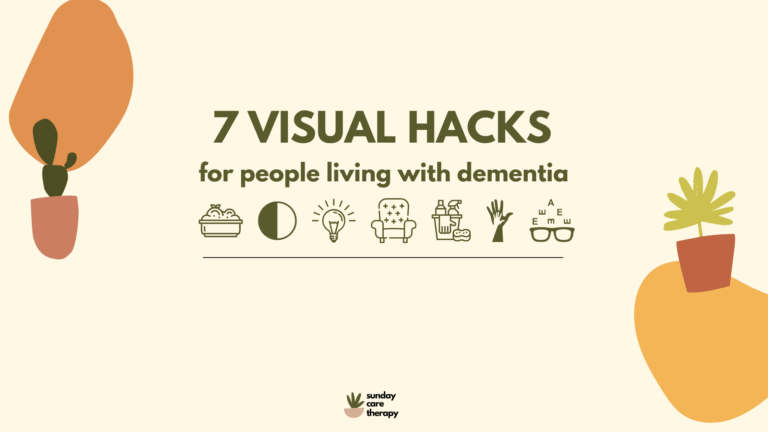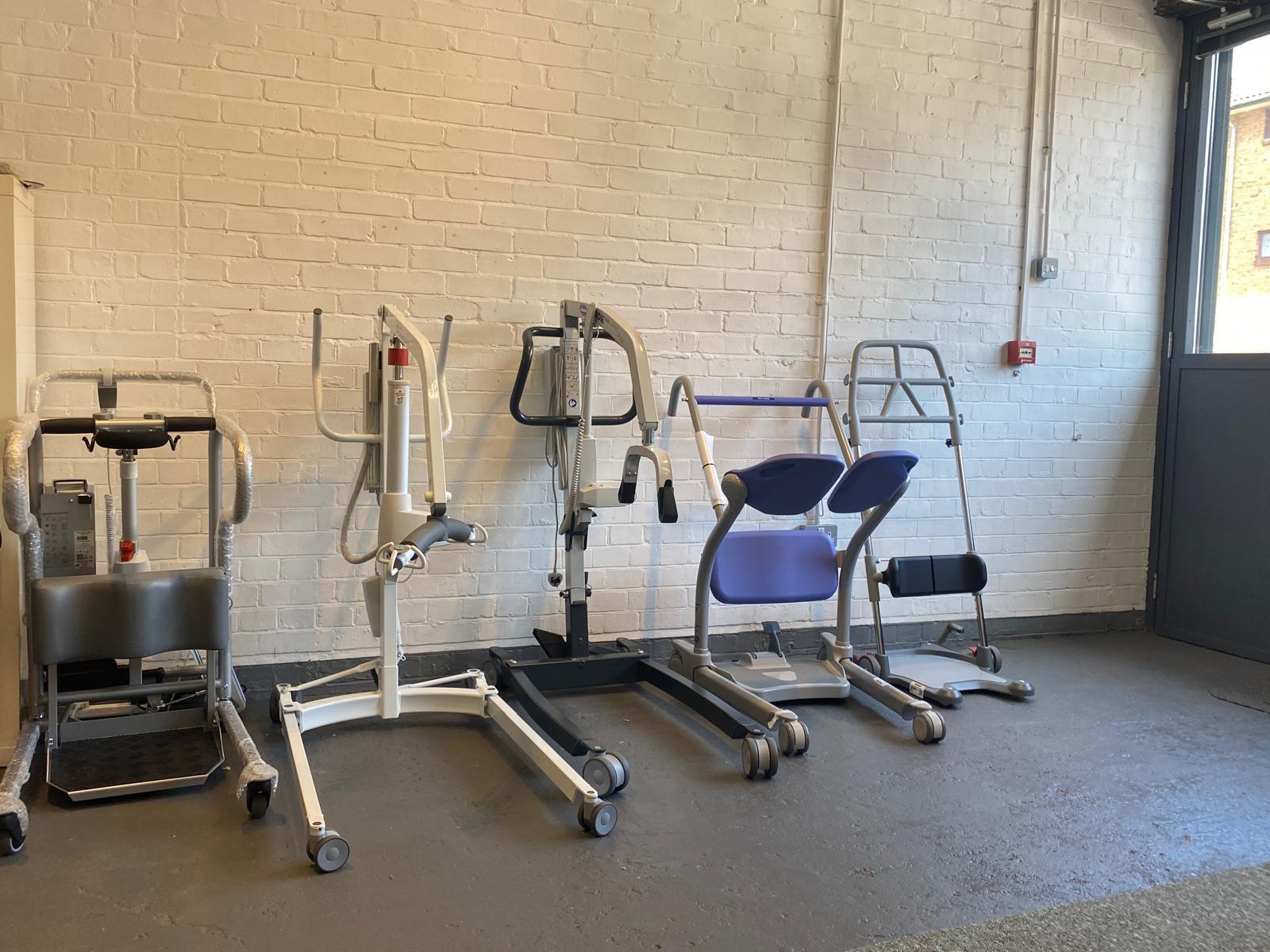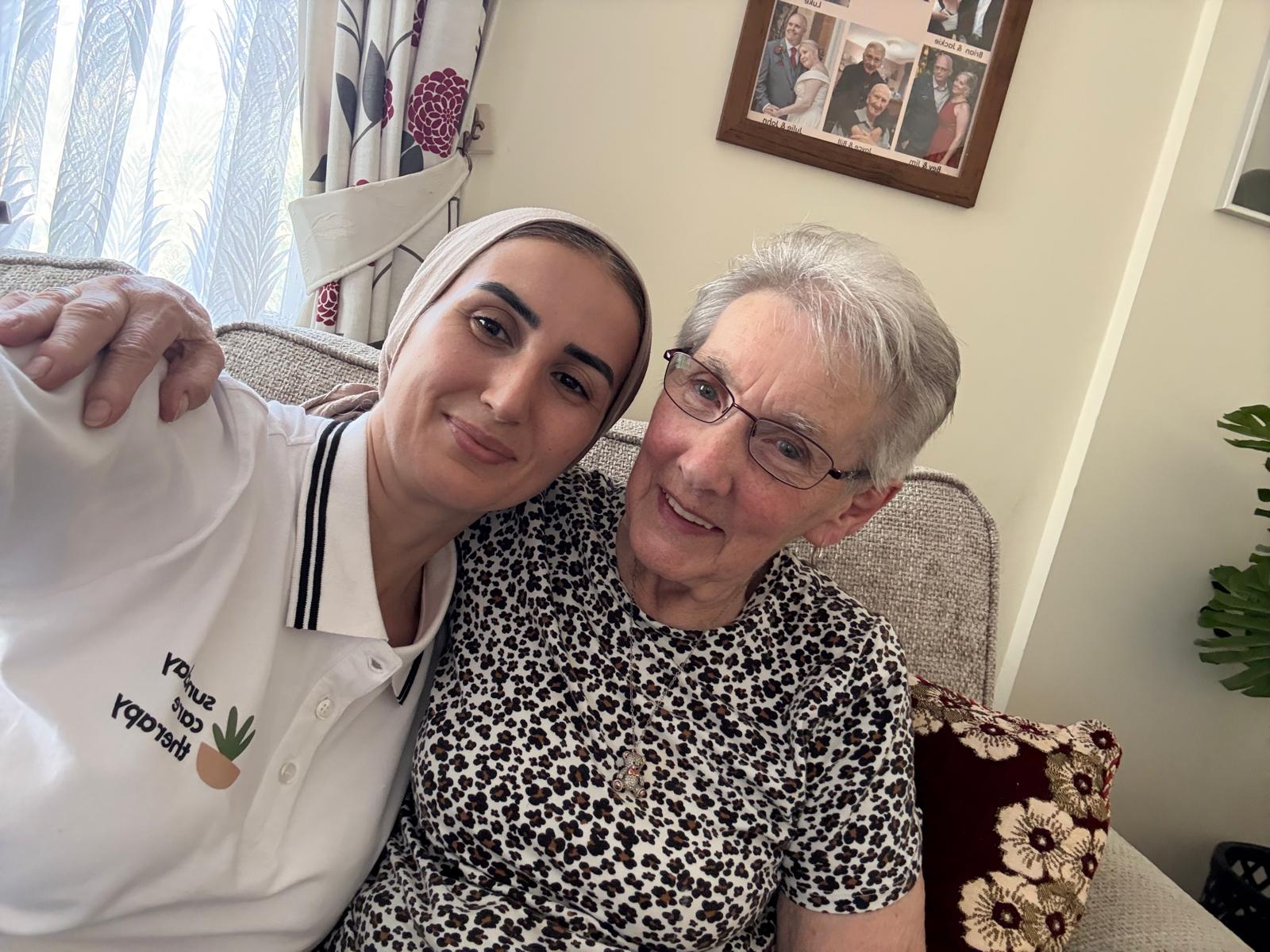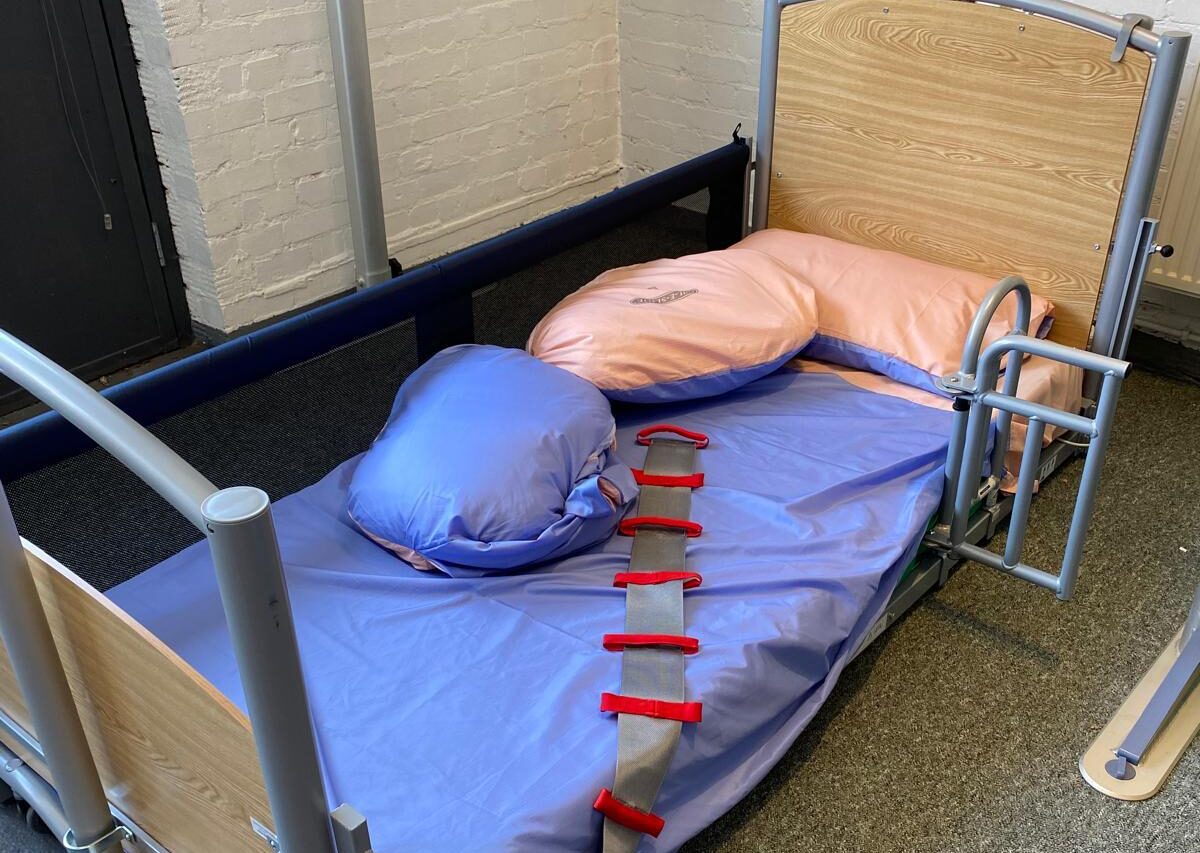Do you have a family member with Dementia who…
-
Suddenly stopped enjoying their food?
-
Kept forgetting to drink their water?
-
Do they get scared at night, or avoid walking down the hallway in your home?
Does this sound familiar?
There could be a simple explanation, and they could be struggling with their visual perception.
Dementia is highly complex and everyone presents differently with it, but there are some common issues that may be due to the changes in their visual field or visual perception.
If this is the case, here is what you can do to make simple tasks like eating and drinking feel like second nature again.
Here are some simple tips that may be able to help your loved one presenting with Dementia and struggling with tasks around the home.
-
No white on white – Contrast is key to make items seen. Eg. mash potatoes on a white plate. You just made dinner invisible!
-
Contrast block colours – The contrasting colours that works for each person are going to be different so play around!
-
Make lighting functional – Turn the lumens up and focus them on what needs to be seen.
-
No busy patterned furniture – It needs to go! Busy designs can be very distracting and even play with someones depth perception.
-
Don’t shine your floors – Shiny floors or reflective floors might be an issue as someone could perceive them as slippery or wet.
-
Reduce shadows at home – Especially at night, reduce shadows. A common feature in Dementia is “sundowning” this is where people become extra confused at night. Reducing shadows has been shown to help with this.
-
Seek professional help – If in doubt get an assessment. Get an eye test done, visit an Optometrist or get a home assessment. are possible) several services can provide assessments at home. Also consider having a specialist OT complete a cognitive perceptual assessment to see if visual perception has been effected.
Want to know more about the science and evidence behind this?
Read on for a a more in-depth look at vision loss, perceptual difficulties and Dementia from the point of view of an Occupational Therapist.
Identifying if someone is presenting with a genuine loss of vision or perceptual difficulties can be difficult. A way to inform your decision is to look at where the difficulties lie.
If someone is having difficulty with reading, coping with low light or avoiding obstacles it could be a visual problem, so always first look at having someones vision tested. It is just good practice!
No white on white in action
Tip 1, a general rule across the board is no white on white. Anyone with any visual problems or perceptual difficulties regardless of their diagnosis is going to have difficulty with white on white, as there is literally no contrast here.
Take for example a typical bathroom set up:
You go in and there are white tiles, with a white bath panel, a white sink and a white toilet. For someone with any perceptual difficulties, this is going to be a nightmare. Frequently you hear of people with Dementia going into the toilet independently, but once inside, they are using the bin as a toilet. Turns out the bin was the only thing in the room with any colour! So, it was the only thing that stood out. Banish white on white in any home with someone living with Dementia or any visual perceptual issues.
Learning to contrast, a study in 2003 by Tracy E Dunne et al, Visual contrast enhances food and liquid intake in advanced Alzheimer’s disease, showed that by learning how to contrast when serving food and liquid there was a 25% increase in food uptake and a 84% increase for liquid intake with 8 out of 9 participants exhibiting increase in intake.
This was achieved by high contrasting blue or red with a base line of white.
Learning to contrast can have a big impact on daily life, some ideas to try at home:
-
Increase intake in food with use of a red or blue plate
-
Being able to find the toilet with green toilet seat
-
Being able to walk upstairs again by placing colour strips on the edge of the steps
Understanding functional lighting
Lighting and Dementia can be a complex situation, light impacts our circadian rhythms and production of melatonin. With Dementia there maybe a degeneration of the suprachiasmatic nucleus of the hypothalamus, which also can impact our production of melatonin and changes to our inner body clock (Khachiyants et al 2011)
In Lighting for people with Dementia, a study in Lighting Res. Technol 2007, by improving lighting not only are we support people living with Dementia to regulate body clocks but also can support engaging in orientation to place and activities.
When assessing look at someones access to natural day light, how much are they getting during the day and can this be increased? Also look at general day to day activities, such as eating or reading. Does extra light need to be added to highlight and support the activity?
Minimising busy patterns
By minimising busy patterns on walls and flooring we are reducing the risk of misperceptions and misidentification. For example, someone with Dementia may see one thing and mistake it for something else, a blue rug with swirls on it, placed on the floor maybe misperceived as a puddle or water on the floor. The Alzheimer’s society recommend avoiding busy patterns as they maybe seen as an obstacle or barrier that someone will try to avoid.
The same can be said for shiny floors, someone with Dementia might perceive a shiny floor as wet and slippery again this will become something they can either want to avoid or even become fearful of. When assessing the home environment, if there is a particular area someone avoids or is fearful of, take a step back and think, what am I looking at? Is it busy, is it confusing are there abrupt changes? Keeping a steady flow of design can assist someone with Dementia in safely accessing areas of the property required to access.
Reducing shadows & sundowning.
Sundowning is a syndrome seen in up to 1 our of 5 people living with Alzheimer’s Dementia, but can also happen to older people who don’t have Dementia. The presence of sundown syndrome has been associated with a more rapid cognitive function deterioration in people with early stages of Alzheimer’s (Scarmeas et. al. 2007)
Some of the triggers for Sundown may be less light leading to longer shadows which may increase fear. When this happens it can lead to a host of behaviours such as agitation, restlessness, irritability, disorientation and suspicion just to name a few.
The Alzheimer’s society advise reducing shadow’s by improving light, not only does it support people to access areas that before may have been dark and scary, but also reduce the risk of falls!
When it comes to living with Dementia small changes can make big differences. Just by looking at something as simple as visual cues and lighting you can have a big impact on someones ability to engage in purposeful activities and regain lost skills/independence.
Don’t be afraid to try out these tips playing around to see what might work and what doesn’t work.
If you or a loved one is experiencing difficulty living at home with Dementia, why not look at having an OT assessment to see if Sunday Care Therapy can assist with care provision. All our care partners are highly trained in working with people living with Dementia and every customer has a complimentary Occupational Therapy assessment to ensure they are as supported as possible. Contact us at hello@sundaycaretherapy.com or give us a call on 0203 488 7388.
For making it to the end, here is a final bonus tip! Implement change before it becomes an issue, best to have it and not need it, rather than need it and not have it! By implementing change early you have already reduced risks of feeling fearful, increased confusion and supported engagement in everyday purposeful activities, the ethos behind Sunday Care Therapy.
This was written by an Occupational Therapist, Derek Sleater, Co-founder of Sunday Care Therapy.
Occupational Therapy is evidence-based, so please find research referenced listed below:
References –
-
Alzheimer’s Society Sight, perception and hallucinations in Dementia 2016.
-
JM Torrington BA BArch RIBA and PR Tregenza BArch MBdgSc PhD RIBA MCIBSE CEng Lighting for people with Dementia 2007
-
Khachiyants N, et al. Sundown syndrome in persons with Dementia: An update. Psychiatry Investigation. 2011;8:275.
-
Scarmeas N, Brandt J, Blacker D, Albert M, (2007) Hadjigeorgiou G, Dubois B, et al. Disruptive behavior as a predictor in Alzheimer disease. Arch Neurol; 64:1755–1761
-
Tracy E Dunne, Sandy A Neargarder, P B Cipolloni, Alice Cronin – Golomb, Visual contrast enhances food and liquid intake in advanced Alzheimer’s disease 2004.





